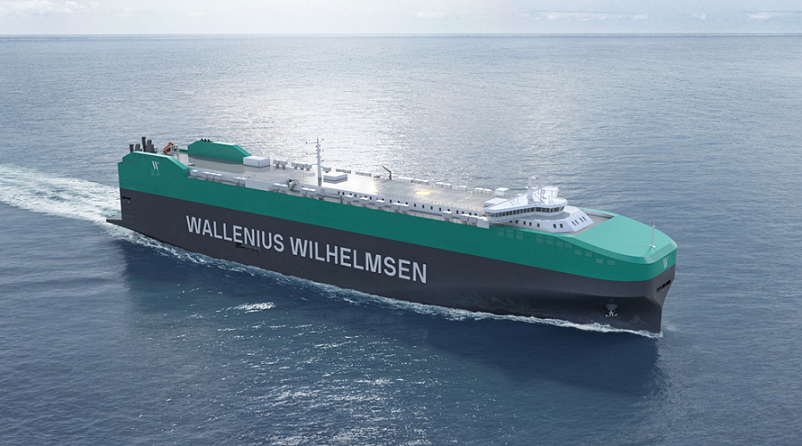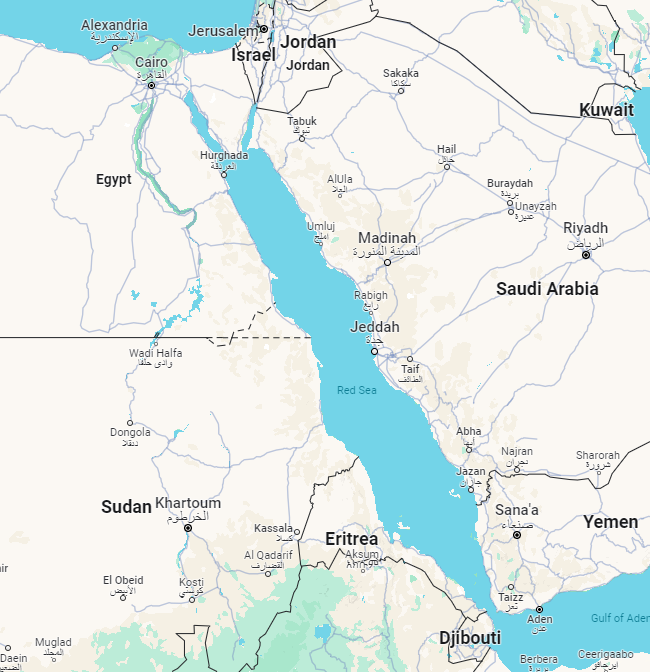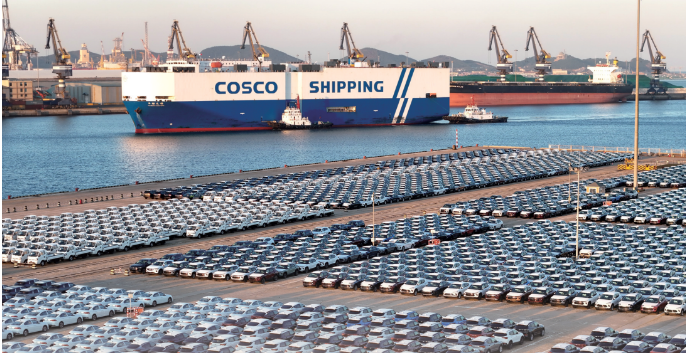Be your Logistics Department in China
Customized logistics solutions, your logistics expert in China
Customized logistics solutions, Shipping from China to the World
Tel:+8613424475220 Email:info@viputrans.com 
The impact of the Red Sea crisis on the car shipping market is far greater than imagined
Recently, at the Marine Money conference in London, Ivar Myklebust, chairman of the board of directors of Gram Car Carriers ASA (GCC), an independent Norwegian car ship owner, pointed out that the Houthi armed forces’ attacks on commercial ships resulted in the Red Sea/Suez Canal area being without car carriers for the first time in 30 years (PCTC) passed.
The incident highlights the far-reaching impact the Red Sea crisis has had on the car shipping market, far beyond what people imagined.
No PCTC passes through Red Sea for first time in 30 years
Due to the Red Sea crisis, the number of car carriers passing through the Red Sea/Suez Canal has dropped from an average of 90 ships per month in 2023 to zero currently, with all major players rerouting around the Cape of Good Hope.

Norway's three major shipowners Wallenius Wilhelmsen, Höegh Autolines and GCC have all decided to bypass the Cape of Good Hope.
The Red Sea crisis has had a profound impact on the car and ship market. In the short term, major shipping companies have re-arranged routes to avoid the Red Sea area.
In addition, the "Galaxy Leader" operated by Nippon Yusen Kaisha (NYK) became the first ship to be hijacked by Houthi armed forces, an incident that heightened market tensions.
China's export of electric vehicles to Northern Europe has boosted the boom in the car ship market.
January 23 was “the first day without a PCTC transit in the Red Sea, which has not been seen in the past 30 years.
This has a significant impact on the supply and demand balance.”
Sailing around the Cape of Good Hope adds 10 to 12 days to sailing time each way in a tight supply and demand market that already uses alternative methods, including containers, to move more than one in 10 vehicles.
This amounts to a 5-7% increase in demand. In a sense, the disruption to the Suez Canal means higher freight rates, delayed deliveries, and an increase in overall uncertainty.
Gram Car Carriers ASA said that although the situation may change in a short period of time, it still does not see any signs of improvement and therefore decided to ban its ships from passing through the Red Sea.
This decision highlights the uncertainty and risks in the current market, resulting in a significant impact on the balance of supply and demand.

Ocean carriers transporting cars also have to pay more for the detour.
Under the influence of the Red Sea crisis, the car and ship market is facing a series of challenges.
Unlike other market segments, more than 80% of car shipping is bound by long-term contracts, making it difficult for car ship operators to pass on the increased costs of sailing around the Cape of Good Hope to cargo owners, who may have to bear it themselves.
Typically, longer sailing distances result in less capacity in the market and push freight rates higher, which ultimately benefits operators.
However, compared to liner companies, car ship operators have a limited spot market and need to bear the increased costs of voyages and fuel consumption themselves.
This means that, similar to the container shipping industry, they can only respond to these costs by adding surcharges.
Wallenius Wilhelmsen executive vice president and chief operating officer Xavier Leroi said the company has not made a final decision on whether to implement surcharges or increase freight rates.
With most ships on long-term contracts, Wallenius Wilhelmsen is limited in what it can do to deal with the increased costs of sailing.
Xavier Leroi estimates that sailing around the Cape adds an average of nine days to the voyage. While some ships operating in the spot market have not yet added surcharges, this does not rule out the possibility that they will be implemented in the future.
He said sailing around the Cape of Good Hope has had an impact on fleet capacity and the company is engaging with customers to study how to further improve efficiency.
Meanwhile, Norway's Höegh Autoliners and independent shipowner GCC are facing similar challenges. Höegh Autoliners is systematically repricing cargo and considering implementing additional surcharges to offset the negative financial impact.
Since GCC does not directly operate ships, it will be less affected. CEO Georg A. Whist said the Red Sea crisis has put further pressure on an already tight market and resulted in 5% of capacity being affected.
When Wallenius Wilhelmsen decided to divert and avoid the Red Sea entirely, the decision had a significant impact on the operator.
Xavier Leroi explained that rerouting some 20 ships already sailing in the area means losing a lot of sailing days, and also needs to consider the issue of supplies on board. Of greater concern now is the reduction in transport capacity.
Overall, the Red Sea crisis has brought many challenges and uncertainties to the car and ship market.
Operators will need to be flexible to cope with additional costs on voyages and work hard to work with customers to drive efficiencies.
However, tight market supply and demand may further intensify, putting greater pressure on automakers to bring products to market on time.
In the short term, there appears to be no solution to the problem of tight car shipping capacity other than shipping in containers.

On what grounds was it decided that it was safe to resume navigation in the Red Sea?
Xavier Leroi noted that while the initial diversion was challenging for Wallenius Wilhelmsen, the current challenge is more complex. The first question is, how to assess when it is safe to resume navigation in the Red Sea?
The company has yet to find a clear answer.
In addition to the safety of the crew, Wallenius Wilhelmsen also needs to pay special attention to the safety of the ship.
This adds additional concerns as specialized ships are more vulnerable to attack and the potential consequences are more serious.
Xavier Leroi further explained that for ships such as PCTC, once water enters, the hatch cannot be closed.
This means that if PCTC is hit by a missile, the consequences will be more serious than other ships, which may lead to capsizing and sinking. This is also an important reason why they choose to avoid any risks.
Overall, the current situation presents Wallenius Wilhelmsen with multiple challenges.
On the premise of ensuring safety, companies need to carefully evaluate when to resume navigation in the Red Sea and continue to pay attention to the safety of ships and crews.
In conclusion, the Red Sea crisis has prompted businesses to explore alternative transportation options, with China-Europe railway transportation emerging as a favorable choice. With its stability, flexibility, and timely delivery, the China-Europe railway offers a reliable and efficient solution for businesses seeking to navigate the challenges posed by the current shipping uncertainties.
If you are interested in China import and export shipping services, please feel free to contact us.
Shawn.Liao(Mr.)
E-MAIL:sales04@viputrans.com
Phone/Wechat/Whatsapp/Skype: +8618926970495
Copyright © 2003-2025 VIPU Supply Chain Logistics Co., Ltd. | All Rights Reserved
LOGISTICS | E-COMMERCIAL FULFILLMENT | ABOUT US | CASE | NEWS | VIDEO | CONTACT US
We will find the fastest or the cheapest way for your shipment. Please specify: where from, where to, what to ship.